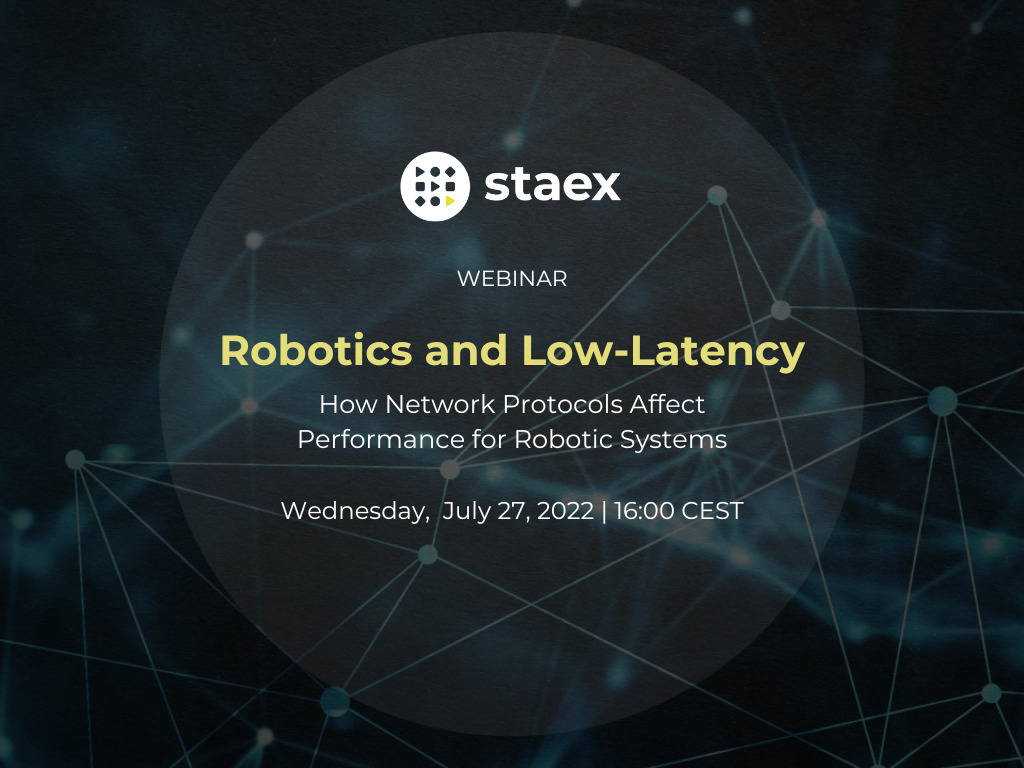Robotics and low-latency: How transport protocols affect the performance of robotic systems
2022-07-27
With the advent of 5G and higher speed network infrastructure, the choice of transport protocol affects how quickly data can flow to and from robotics systems. Andrew Heimerman will conduct this webinar to discuss the role that latency plays in industrial robotics as well as the impacts of TCP versus UDP for high speed connectivity.

Wednesday, July 27, 2022 | 16:00 CEST
Industrial robotics companies struggle with latency for their devices when they are deployed industrial environments. Autonomous and remote controlled robots require high data throughput at the lowest latency in order to avoid critical synchronization issues when operating in industrial environments. With the advent of 5G and higher speed network infrastructure, the choice of transport protocol affects how quickly data can flow to and from robotics systems. Andrew Heimerman will conduct this webinar to discuss the role that latency plays in industrial robotics as well as the impacts of TCP versus UDP for high speed connectivity.


Staex is a secure public network for IoT devices that can not run a VPN such as smart meters, IP cameras, and EV chargers. Staex encrypts legacy protocols, reduces mobile data usage, and simplifies building networks with complex topologies through its unique multi-hop architecture. Staex is fully zero-trust meaning that no traffic is allowed unless specified by the device owner which makes it more secure than even some private networks. With this, Staex creates an additional separation layer to provide more security for IoT devices on the Internet, also protecting other Internet services from DDoS attacks that are usually executed on millions of IoT machines.
To stay up to date subscribe to our newsletter, follow us on LinkedIn and Twitter for updates and subscribe to our YouTube channel.

See also
Staex and MIBO Announce Strategic Partnership to Bring Trusted IoT Connectivity to Public Transport
2025-03-17
Staex, an award-winning innovator in zero-trust IoT connectivity and network management, is partnering with MIBO, a German bus fleet company operating 150 buses in Nordrhein-Westfalen, to revolutionize public transportation data management.
Generative Ventures Invests in Staex
2025-01-24
Generative Ventures Invests in Staex to build a Scalable and Resilient Internet for DePIN.
Geeny by Telefónica and Staex to build secure public network for remote machines and devices
2024-05-06
Geeny by Telefónica and Staex will provide building blocks for secure IoT connectivity in the field.


